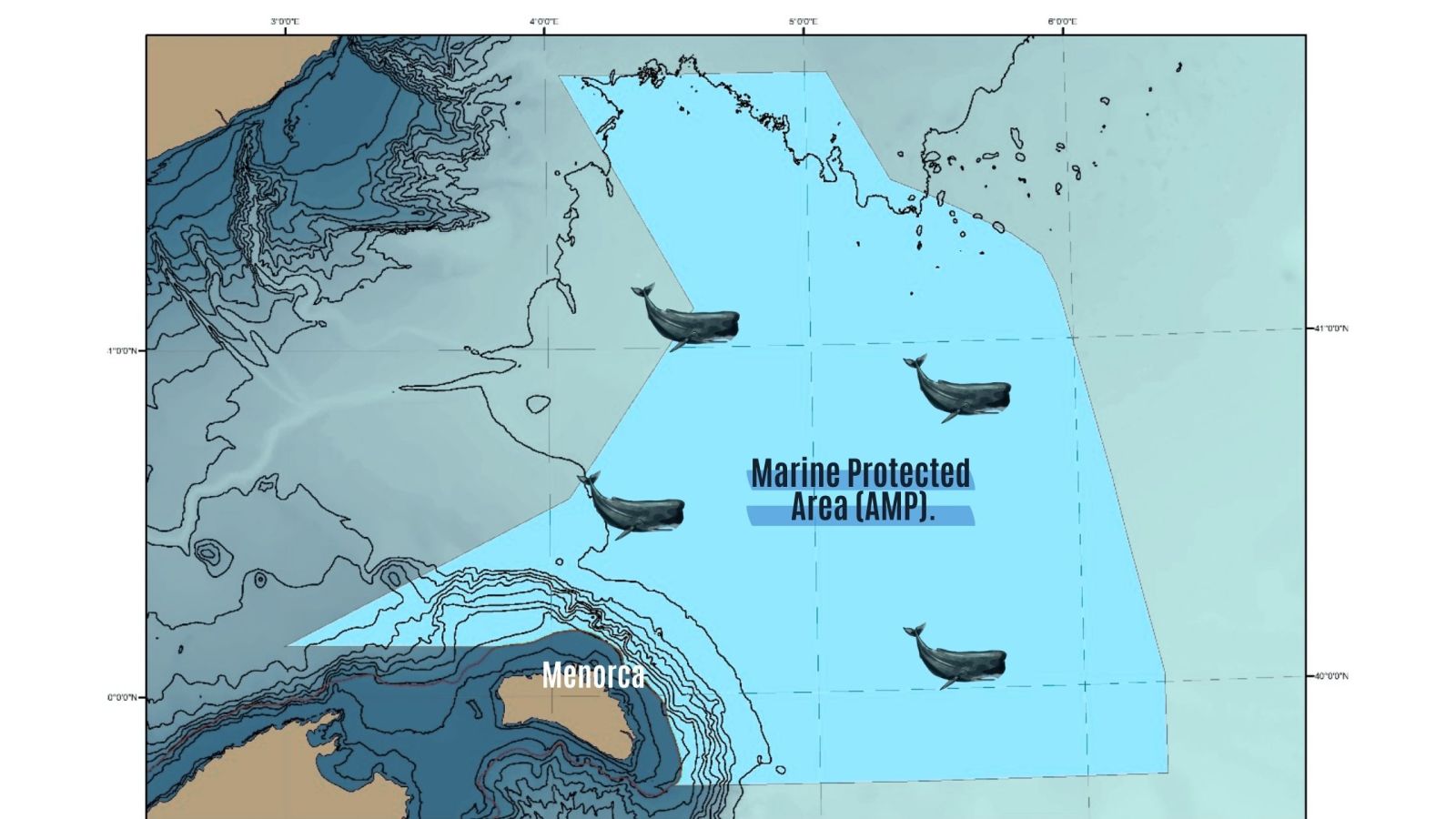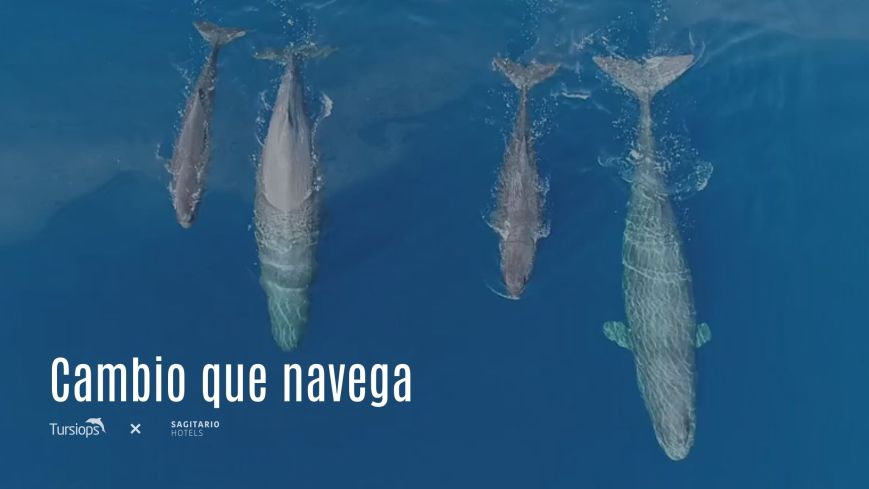Can a simple pool towel change protect the Mediterranean?
With "Cambio que Navega", your small choice saves water and energy while turning 100% of the swap fee into Tursiops’ marine research—right where Menorca’s north may be a nursery for sperm whales. Discover how your gesture can make a real difference.
Dolphins in Menorca: Sagitario Hotels & the Tursiops Association united for the Balearic Sea
Cambio que Navega: conscious tourism in Menorca
With Cambio que Navega we propose a simple gesture with a double effect: turning the pool towel change into direct support for marine science while encouraging responsible reuse to reduce water, energy and chemical consumption. When a guest requests a change, a small fee applies and 100 % of that amount is donated to the Tursiops Association. Reusing already helps: fewer washes mean fewer resources used and fewer emissions linked to laundry.
The initiative works without compromising comfort, helping avoid unnecessary changes. We aim to prioritise responsible use and turn any unavoidable impact into useful scientific support. It connects with a shared purpose: Together we care for Menorca.
How it fits into the guest experience
- You decide: reuse your towel or request a change on demand.
- Full donation: 100 % of the towel-change amount goes to Tursiops’ scientific projects.
- Dual benefit: resource savings (water/energy) + support for studies in the Balearic Sea.
Why protect dolphins and sperm whales in the Balearic Sea?
The Balearic archipelago is important for cetaceans such as the bottlenose dolphin (Tursiops truncatus) and the Mediterranean sperm whale (Physeter macrocephalus). Ongoing research seeks to better understand sensitive areas to the north of Menorca related to sperm-whale nursery use, providing scientific knowledge to inform conservation measures.

Protecting these habitats involves identifying presence patterns, movement corridors and pressures such as underwater noise and maritime traffic, then translating that knowledge into management recommendations.
Tursiops Association: science applied to conservation
The Tursiops Association runs research and monitoring projects on cetaceans in the Balearics, including photo-identification campaigns and studies on bottlenose dolphins and sperm whales. Their work combines field surveys, data analysis and technical recommendations to improve protection of species and habitats.
Impact, indicators & communication
The project is explained to guests with clear messages about responsible towel use and support for research. We will share general information and updates on our blog.
Frequently asked questions about dolphins in Menorca
Can you see dolphins in Menorca?
Yes. The bottlenose dolphin is one of the species observed around the Balearics. Chances increase with calm seas and early-morning conditions. Please observe responsibly: keep your distance, do not chase or feed, and follow applicable regulations.

Are there sperm whales in the Mediterranean and around Menorca?
Yes. The Mediterranean sperm whale is recorded in the Balearics. Current research examines sensitive areas to the north of Menorca linked to nursery use, with the aim of informing potential protection measures.
.jpg)
What does the Tursiops Association do?
It researches and helps conserve cetaceans in the Balearic Sea through field campaigns, photo-identification and analysis of pressures. Findings inform technical recommendations to protect dolphins, sperm whales and their habitats.

How does “Cambio que Navega” support conservation?
Each pool towel change becomes a full donation to Tursiops. If you reuse, you also help: you cut resource use and reinforce responsible consumption without losing comfort during your stay.

Does this affect hygiene or guest comfort?
No. Changes are on request and service quality standards are maintained. The aim is to avoid unnecessary changes and, when requested, turn them into support for science.

Join “Cambio que Navega”: reuse your towel and support marine science to protect dolphins and sperm whales in the Balearic Sea.
Read more on the blog Explore our sustainability








